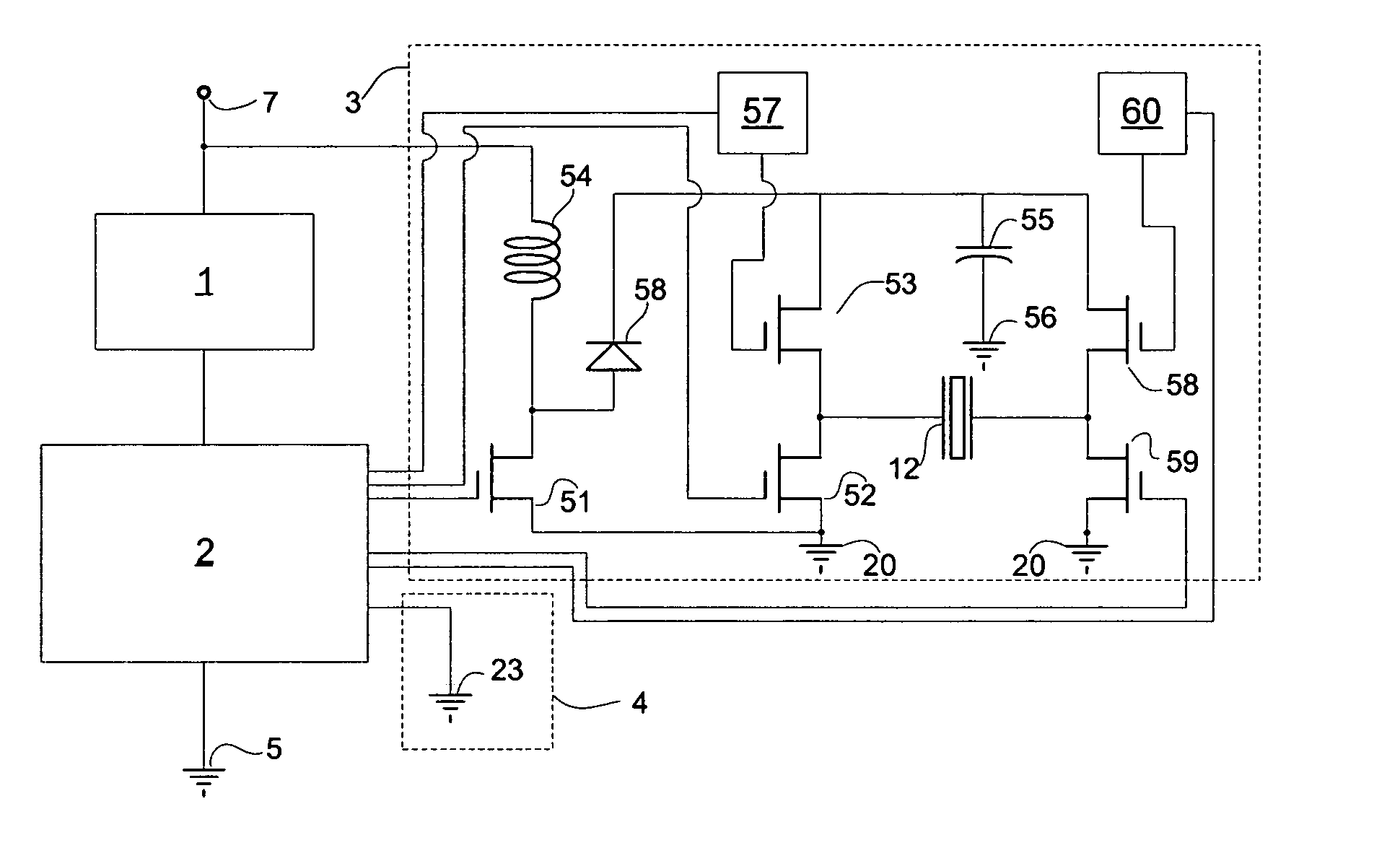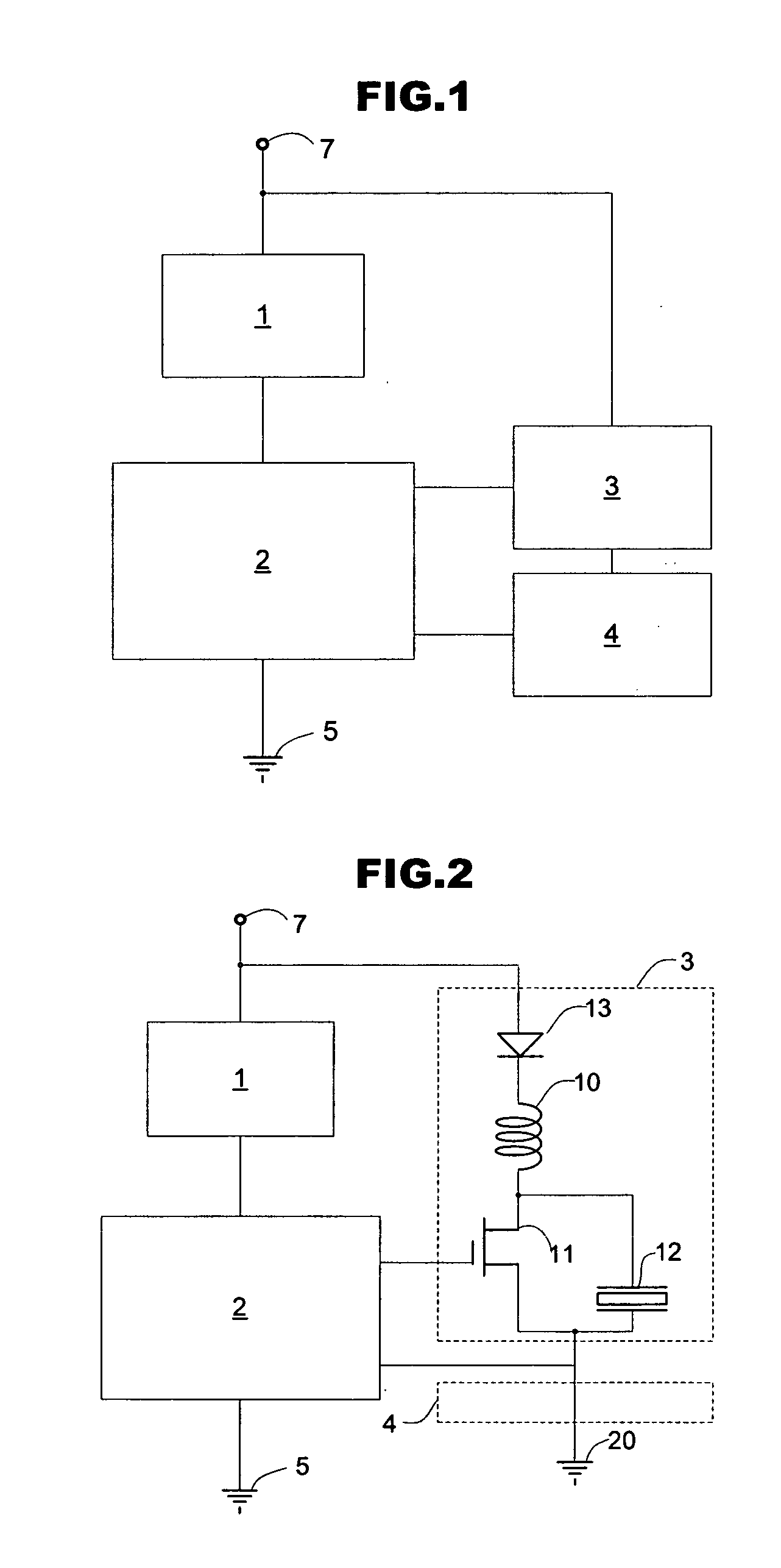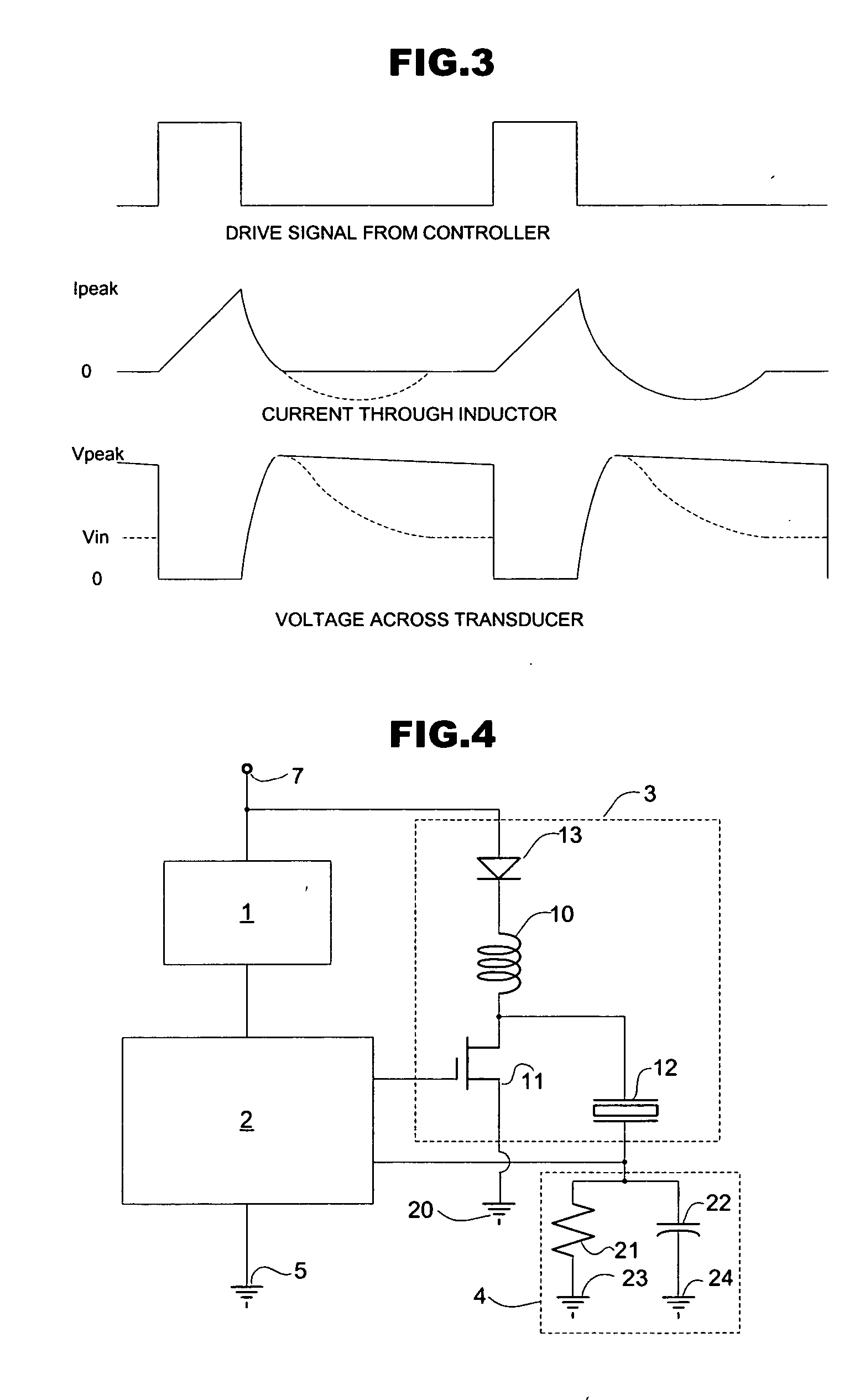Processor control of an audio transducer
a technology of audio transducer and processor, which is applied in the direction of audible signalling system, instruments, signalling system, etc., can solve the problems of high voltage and little flexibility
- Summary
- Abstract
- Description
- Claims
- Application Information
AI Technical Summary
Benefits of technology
Problems solved by technology
Method used
Image
Examples
Embodiment Construction
[0020] The following discusses a controller function. It is meant that a controller is any device for performing the functions of a finite state machine, defined as a model of computation consisting of a set of states, a start state, an input alphabet, and a transition function that maps input symbols and current states to a next state. Computation begins in the start state with an input string. It changes to new states depending on the transition function. Examples of a finite state machine are microprocessors, microcontrollers, PLAs, PALs, and memories combined with sequential clocking.
[0021] Directing attention to FIG. 2, a detailed electric circuit diagram of a preferred embodiment is shown. An input voltage is applied between a positive terminal 7 and ground 5. This input voltage is regulated by the voltage regulator 1 and applied to controller 2 in a method well known to the practice, as, for example, by a 78L05 voltage regulator. Controller 2 is a programmed controller such ...
PUM
 Login to View More
Login to View More Abstract
Description
Claims
Application Information
 Login to View More
Login to View More - R&D
- Intellectual Property
- Life Sciences
- Materials
- Tech Scout
- Unparalleled Data Quality
- Higher Quality Content
- 60% Fewer Hallucinations
Browse by: Latest US Patents, China's latest patents, Technical Efficacy Thesaurus, Application Domain, Technology Topic, Popular Technical Reports.
© 2025 PatSnap. All rights reserved.Legal|Privacy policy|Modern Slavery Act Transparency Statement|Sitemap|About US| Contact US: help@patsnap.com



